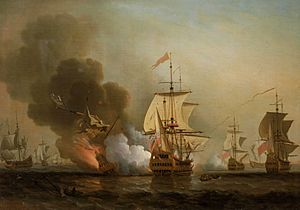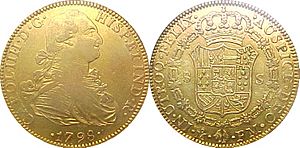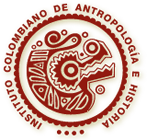Spanish galleon San José facts for kids

Explosion of San José during Wager's Action. Painting by Samuel Scott.
|
|
Quick facts for kids History |
|
|---|---|
| Name | San José |
| Builder | Pedro Arostegui (contractor), Mapil (Usurbil) |
| Laid down | 1697 |
| Launched | 1698 |
| Fate | Destroyed during the Battle of Barú (Wager's Action), 8 June 1708. |
| General characteristics | |
| Type | Galleon |
| Tons burthen | 1,051 tons |
| Length | 71.00 codos (of 564 mm) lower deck length; 60.18 codos (of 564mm) keel length |
| Beam | 21.91 codos (of 564 mm) |
| Draught | 11.75 codos (of 564 mm) estimated |
| Depth of hold | 10 codos (of 564 mm) |
| Propulsion | Sails |
| Armament |
|
The San José was a large Spanish ship called a galleon. It had 64 guns and three masts. It was part of the Spanish Armada. The ship was built in 1698.
In 1708, the San José sank in a battle near Barú Island, south of Cartagena, Colombia. It was carrying a huge amount of gold, silver, and emeralds. This treasure is estimated to be worth about US$17 billion today.
Experts from the Woods Hole Oceanographic Institution (WHOI) found the sunken ship in November 2015. It was lying 600 meters deep in the ocean. In 2017, the Colombian government announced plans to recover the ship's contents.
Contents
The Story of the San José Galleon
The San José was designed by Francisco Antonio Garrote. It was built by Pedro de Aróstegui in a shipyard in Mapil, Usurbil, Gipuzkoa, Spain. Construction began in 1697 and finished in 1698. Another ship, the San Joaquín, was built at the same time. These two ships were twins.
What Was the San José Used For?
Both the San José and San Joaquín were part of the Spanish treasure fleet. This fleet sailed during the War of the Spanish Succession. The San José was the main ship, or flagship, of a treasure fleet. This fleet included three Spanish warships and 14 merchant ships.
They were sailing from Portobelo, Panama, to Cartagena, Colombia. On June 8, 1708, the fleet met some British ships near Barú. This led to a battle called Wager's Action.
How Did the San José Sink?
During the battle, the powder magazines on the San José exploded. This destroyed and sank the ship. Most of the crew, about 600 people, went down with the ship. Only eleven people survived.
The ship was carrying a vast treasure. This included gold, silver, emeralds, and jewelry. These riches were collected from South American colonies. They were meant to help pay for the Spanish king's war efforts.
Finding the San José Shipwreck
The treasure on the San José is thought to be worth billions of dollars. This is because it might have had millions of gold coins and many silver coins. Its sister ship, the San Joaquín, carried a similar amount. The gold and silver came from the mines of Potosí, Bolivia. Because of its huge value, the San José is sometimes called the "Holy Grail of Shipwrecks."
Who Claimed the Treasure?
A group of investors from the United States, called Sea Search Armada (SSA), said they found the shipwreck in 1981. They wanted to share the treasure with Colombia. However, Colombia refused their offer.
Colombia then passed a law saying the state owned all the treasure. SSA would only get a small "finder's fee." SSA sued Colombia in court. In 2007, a Colombian court decided the treasure should be split equally. But SSA's lawsuits in the United States were later dismissed. The galleon was declared the property of the Colombian state.
When Was the San José Officially Found?
On November 27, 2015, the Colombian Navy officially found the San José. The discovery was announced by the President of Colombia, Juan Manuel Santos, on December 5. They used a special underwater robot called a REMUS 6000 to find it.
From underwater photos, experts identified the San José. They recognized it by its bronze guns, which had dolphin engravings. Colombia says the galleon is part of its underwater heritage. This means Colombia must protect and preserve the ship and its contents. The exact location of the ship is a state secret.
Protecting the San José Treasure
The Colombian Institute of Anthropology and History (ICANH) is a government agency. It is in charge of all archaeological sites in Colombia. The director of ICANH, Ernesto Montenegro, said they are studying how to carefully remove the ship's contents.
The former Colombian President, Juan Manuel Santos, also said a museum would be built in Cartagena. This museum would display some of the items from the galleon.
What Are the Plans for Conservation?
In December 2015, the Office of the Inspector General of Colombia asked for careful records. These records should cover all work done on the galleon. They also asked that some coins, gold bars, and gemstones be given to the central bank, Banco de la República, for safekeeping.
The Minister of Culture, Mariana Garcés Córdoba, stated that 2016 would be "a year of exploration, not extraction." She explained that Colombia sees this as a research project. It involves creating special laboratories. Experts from different fields will work together to study the shipwreck and its contents properly.
Images for kids
-
Explosion of San José during Wager's Action. Painting by Samuel Scott.
See also
 In Spanish: San José (1698) para niños
In Spanish: San José (1698) para niños






